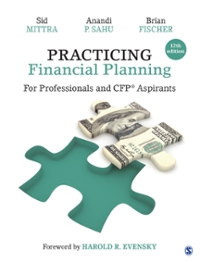Question
Quick Sanitizers Ltd (Quick) is offering various sanitizer dispenser products through its own retail stores in Hong Kong. Quick adopts perpetual inventory method in recording
Quick Sanitizers Ltd (Quick) is offering various sanitizer dispenser products through its own retail stores in Hong Kong. Quick adopts perpetual inventory method in recording cost of sales and its accounting year-end is 31 October. Analyse the following four cases separately in line with HKFRS 15 'Revenue from Contracts with Customers'. All receipts and payments are made by cheque.
- (i)On 1 March 2020, Quick entered into a contract with a corporate client to sell a bundle of electrostatic disinfectant sprayers (ED) with supply of accessories and after-sale services. Quick delivered ED to the client on the date of contract with the fee of the bundle sale of $105,000. The supply of accessories and provision of after-sale service to the client are over the 3-month contract period ending 31 May 2020. Quick sells the same model of ED alone for $90,000. In addition, Quick also provides the same type of accessories and after- sale service over a 3-month period alone for $7,500 and $2,500 per month respectively. Such accessories and after-sale services do not highly inter-related with the ED. Quick also regularly sells ED with a 3-month supply of accessories as a bundle for $97,500.
- (ii)Quick sold anti-virus sanitizer machines (AV) with a fixed sale price and payment is due 60 days after delivery. There is a policy for returning a maximum of 30% AV sold to Quick with full refund. On 1 July 2020, Quick delivered AV with invoice of $15 million (cost of $12 million) to a local hospital under a 4-month credit term. Past experience indicates that the normal return rate from this hospital is 12%. The estimated costs of recovery are expected to be immaterial, and AV are expected to be resold at a profit. On 3 October 2020, $1.5 million of the invoiced sales were returned and the balance of the remaining receivable was received on 15 October 2020.
- (iii)On 1 November 2018 Quick signed a contract to sell roller cart sanitizer sprayer (RC) to a company with settlement at the end of the contract. The price of the RC was set at $110 per unit for all sales of RC within the three-year period ending 31 October 2021 but will have a 15% discount in selling price of all units sold if total sales exceed 125,000 units in the three- year period ending 31 October 2021. Sales in the year ended 31 October 2019 were 33,000 units and this volume of sales per year was not expected to change before 31 October 2021. However, in the year ended 31 October 2020, total sales were 65,000 units and based on current orders from that customer, the estimate was revised to 130,000 units in the three- year period ending 31 October 2021. The contract does not involve significant financing component.
- (iv)On 1 November 2019, Quick commenced work to build two systems that have a specific electrostatic sanitizing function for a customer. Contract price, work certified to date, costs incurred to date and estimated costs to complete of the two contracts (X and Y) were as follows:
As at 31 October 2020
Contract price
X $250,000 Y $150,000
Work certified to date
X$175,000 Y$75,000
Costs incurred to date
X$80,000 Y$90,000
Estimated costs to complete
X$20,000 Y$30,000
During the year ended 31 October 2020, Quick billed the customer $240,000 for contract X and $100,000 for contract Y. As 31 October 2020, the customer made a progress pay- ment of $60,000 for contract Y only to Quick. Quick has determined that each contract is a single performance obligation to be satisfied over time. Revenues and cost are recognised using progress towards completion and the degree of completion is estimated on output method.
Required:
- (a)Discuss whether the contract (i) in Quick can satisfy the requirements of HKFRS 15 to rec-
- ognise revenue and determine the transaction price of each performance obligations. In your answer, you are expected to discuss the application of 5-step model to this contract. No journal entries are required. (13 marks)
- (b)Prepare journal entries for Quick in the contract (ii) as at 1 July 2020, 3 October 2020 and 15 October 2020 respectively. (7 marks)
- (c)Prepare journal entries for Quick in the contract (iii) for the years ended 31 October 2019 and 31 October 2020 respectively. (3 marks)
- (d)Calculate revenue and cost of sale for Quick in (iv) for contracts X and Y separately for the year ended 31 October 2020 and determine the balances of contract asset, contract liability and accounts receivable to be recognized on the statement of financial position as at 31 October 2020.
(7 marks)
Step by Step Solution
There are 3 Steps involved in it
Step: 1

Get Instant Access to Expert-Tailored Solutions
See step-by-step solutions with expert insights and AI powered tools for academic success
Step: 2

Step: 3

Ace Your Homework with AI
Get the answers you need in no time with our AI-driven, step-by-step assistance
Get Started


